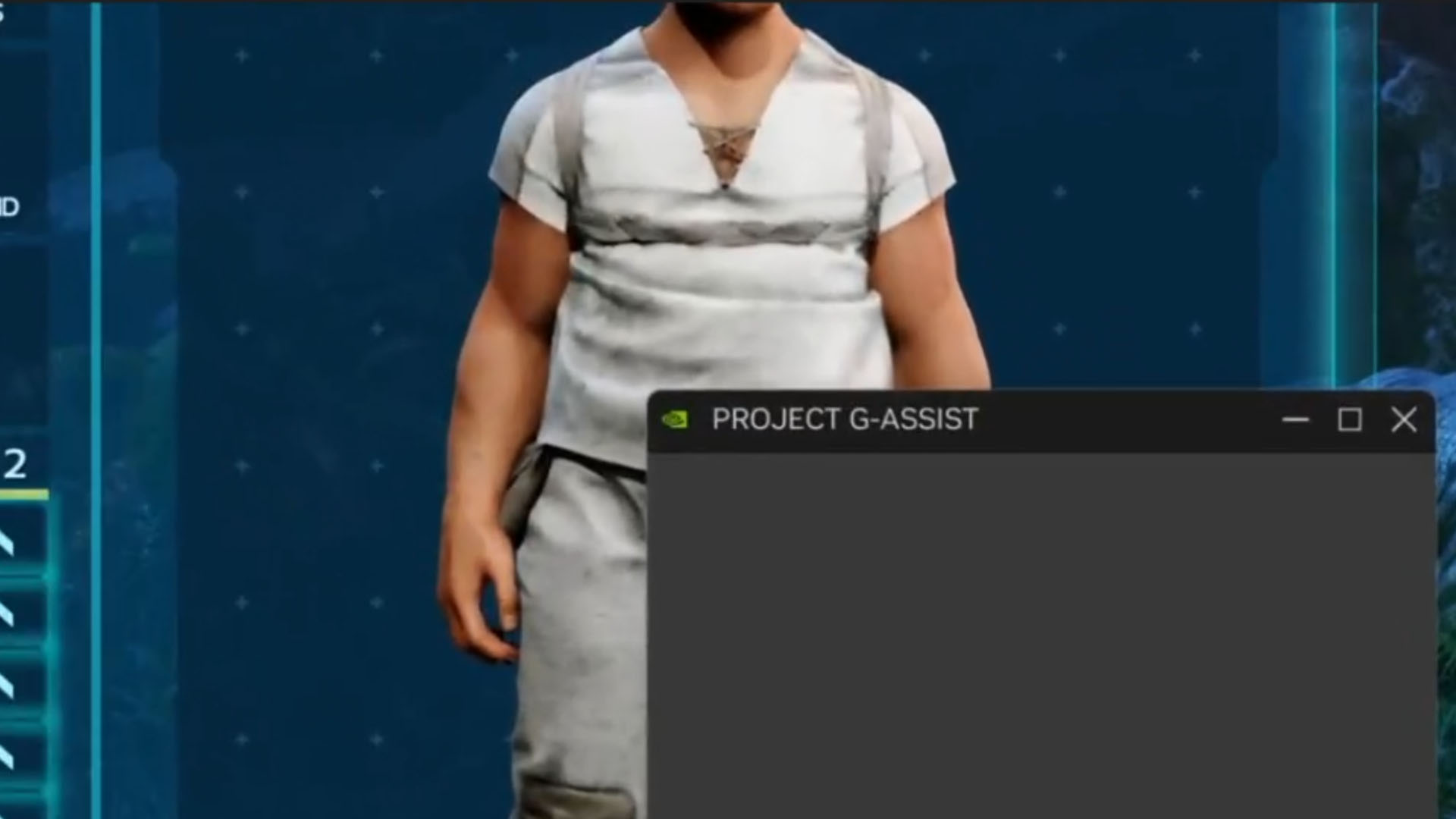It really wasn’t an late Aprils Fools joke this time! Nvidia Project G-Assist is now real as Nvidia has unveiled a new AI game assistant app. It can work with your system and with input from game developers to let you ask questions about how best to proceed in a game or setup your system for peak performance, for instance.
Yes, seven years after Nvidia first teased such a gaming AI assistant as an April Fools joke, and a few days after the official GeForce X/Twitter account retweeted that original Nvidia G-Assist joke, G-Assist is now a real app that’s set to make it easier to get the most from the best PC games and best graphics cards of the world.
So what is Project G-Assist and what can it do? Well, the G-Assist app is a standalone app, in a similar vain to the company’s ChatRTX app. It will appear as an overlay in your games where it will allow you to ask it whatever you want.
Some examples of the sorts of functions the app can perform include offering advice on the best weapon to use at the start of a game, suggesting the best skill to next upgrade, or identifying the creature that is currently visible onscreen.
It can also be used to optimize your system and provide performance metrics, with Nvidia demonstrating the example of asking for the app to chart system latency for the last minute of gameplay. You can also ask if there’s a setting that might be causing problems with your game.
It does all this by working in conjunction with game developers – yes, game support is seemingly needed – with the app able to take in information from your voice or text along with other system/app data and combine it with the “knowledge database” that is provided by developers about the game. This could be data such as skill trees, quest lines and endings, weapons characteristics, and enemy/character attributes.
By tapping into all this data, Project G-Assist can essentially recognize what’s onscreen or what else is happening in the game – such as already knowing your current skill tree progress – and use this to offer the best advice it can. It can also run its modelling both locally on RTX cards or on cloud servers.
Nvidia demonstrated the app using Ark: Survival Ascended, askiong it questions such as the best early game weapon, to which it replied that “the best early game weapon is the spear. It provides knockback and is essential for survival.”
Another question asked was simply “what saddle do I need to tame that dino?” The app was able to contextualise that the demonstrator meant the dinosaur that was currently visible onscreen and was able to report back that the Trike Saddle is the one needed to ride a triceratops.
It’s all quite impressive stuff but there are two glaring potential issues. First is that this has the potential to take the fun of discovery out of games if it brings too much information to the fore too easily. It’s a slippery slope to this being essentially built in cheats.
The other is in the opposite direction which is that it could all be a bit too surface level. Because developer support is needed, the app may not have access to quite enough information to really be useful and what context it can provide – or what system settings it can adjust – might all be really obvious things that, ultimately, it would be quite easy to just search online for.
Still, it is only a demo meant to showcase where AI could be useful in games. It certainly has the potential to be just the first step in a dystopian AI-ruined game landscape or could be the sign of a wonderful new dawn of reduced gaming frustration. We’re certainly intrigued to try it to find out the direction in which its heading.
For more on Nvidia’s AI gaming vision, check out its Nvidia ACE AI NPC demo that has in-game characters respond in natural language to your questions.


